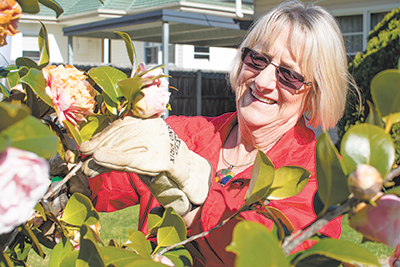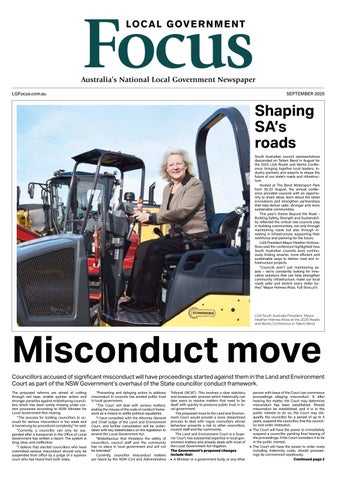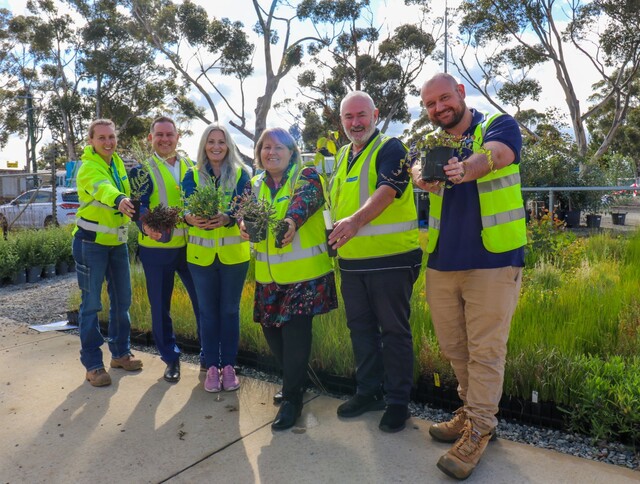As Australia’s population continues to age – particularly in regional areas – local governments are identifying the
economic advantages that can coincide with the trend.
East Gippsland Shire in Victoria covers a huge geographical area, spanning from popular family holiday destination Lakes Entrance, to remote Mallacoota, up along the New South Wales border and into Snowy River territory.
Renowned for these pristine surrounds, the Shire has a large number of holiday homeowners and attracts its fair share of tree and sea changers looking to escape the city for quieter living.
Over the past few decades, the region has been undergoing a demographic trend common to many regional municipalities: it is experiencing a rapid rate of aging.
Home to 18,000 older residents, the Shire can be described as “super-aged”, meaning more than 21 per cent of residents are over the age of 65.
An aging population is a defining feature of twenty-first century Australia and is a trend echoed worldwide; it is projected that by 2050, for the first time in history, there will be more people in the world over 60 than under the age of 15.
From East Gippsland’s perspective, an older population could have been seen as a potential burden on resources and services, but instead, the Shire is identifying unique economic opportunities that can spring from the demographic shift.
“Our proportion of older residents is growing at a slightly faster rate than other municipalities; rather than look at that as a problem, the best thing to do is to flip it and say, ‘Well, what are the
opportunities there?’” said Paul Holton, Council’s Director Development.
A particular town in the region, Orbost, has been identified as an ideal location to become known as an “age-friendly” town.
Formerly reliant on the forestry industry, the town of two and a half thousand people has gone through an economic transition over recent years as demand for native timber has slowed.
Council worked with the community to identify potential strategies to shore up the local economy, and it was established that creating an industry around the town’s older population could prove an economic boon.
“When we did the numbers it gave the best employment outcomes,” said Fiona Weigall, Council’s Manager Strategic Planning. “It actually generated more jobs and more money in the local economy than the other [potential industries] we looked at.”
Council projections show that for every additional fifty older residents attracted to the town, an additional 6.8 jobs (primarily in personal services, health and retail) would be generated, which is equivalent to $932,000 of additional Gross Regional Product (GRP).
Ms Weigall said the Council plans to work with the existing character and infrastructure of the town to both assist older residents already living there, and eventually encourage an influx of new residents.
“One of the real strengths of Orbost is that it’s got a strong hospital and health service, it’s got housing supply, and it’s an established town with established infrastructure.”
From the outset, the project has been very community-driven, and several community committees have been established across areas of marketing, leisure, housing and transport.
Council is following World Health Organisation (WHO) guidelines for creating age friendly towns, and also working with Council on the Ageing (COTA).
A project currently underway in Orbost is the redesign of public spaces and streetscapes to be more amenable for older residents, which includes increasing seating, eliminating trip hazards and choosing tree species that don’t drop much foliage.
Increasing housing supply and diversity is also a priority and Council is in the process of rezoning land for more residential development.
Since the economic opportunities were initially identified in Orbost, the age-friendly focus has now been expanded across the entire Shire.
A recent Council-commissioned report into relevant business opportunities identified residential retirement villages, health and fitness, financial services, and legal services as areas worth pursuing.
A residential estate in the regional centre of Bairnsdale has already proved a successful economic driver, allowing people to comfortably “age in place”.
Mr Holton said Council recently approved another $45 million retirement village in nearby Paynesville.
“Over time that will develop and it will bring a lot of people from outside the municipality into the region in search of a better lifestyle,” he said.
Updating local aquatic centres to be designed for universal-access is also a priority, as is advocating for improved transport across the Shire.
Going forward, the municipality is looking to facilitate more private sector investment, said Mr Holton.
“The private sector is seeing the opportunities and local government’s role is to try and develop the facts and figures that would try to generate some excitement around investment in that particular sector.”
Ms Weigall said the Shire is taking a holistic view: “It’s about us working together and looking at the business opportunities, the physical space and the programs and social support, so we’re not just focusing on one component.”








